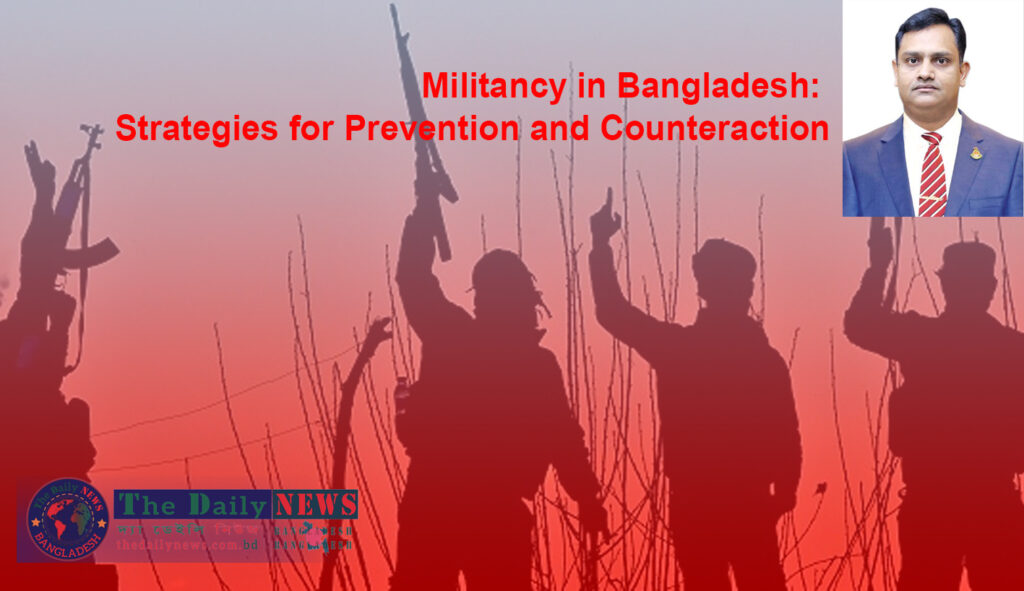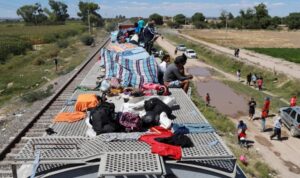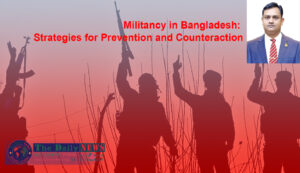
 The Daily News Online Desk | Published: 27 Sep 2023, 10:03 AM | Update: 27 Sep 2023, 10:03 AM
The Daily News Online Desk | Published: 27 Sep 2023, 10:03 AM | Update: 27 Sep 2023, 10:03 AM
Terrorism, a persistent global concern, has a rich and ever-evolving history. In today’s world, it manifests through militant violence driven by political, ideological or religious motivations.
Bangladesh, though not its originator, has grappled with terrorism, its roots tracing back to communist insurgents aligned with Cold War-era socialist movements. The post-Soviet Afghan crisis saw affiliations with religious extremists. What sets Bangladesh apart is its unique trajectory, marked by the emergence of various terrorist groups, each leaving a trail of brutality.
Bangladesh combats this menace through its resolute population, a well-defined government vision and effective law enforcement. The people’s unwavering stance against terrorism is pivotal. The government’s proactive strategy has curbed militant influence. In the face of evolving threats, Bangladesh remains dedicated to peace and security. Its resilience shines as a beacon in the global fight against terrorism, demonstrating that with determination, vigilance and unity terrorism can be confronted and defeated.
Since its inception, the Rapid Action Battalion (RAB) has been a linchpin in Bangladesh’s battle against militancy, devotedly executing its designated mandate. RAB has achieved remarkable success by dismantling the intricate networks of first-generation militant organisations and apprehending their top leaders, including the recently banned Jamaatul Ansar Fil Hindal Sharqiya’s Ameer. Figures like Mufti Hannan from HuJI-B, JMB’s Shaikh Abdur Rahman, Siddiqul Islam alias Banglabhai, and other militant leaders had to confront justice due to RAB’s unyielding efforts. Notably, RAB apprehended Mufti Moin Uddin alias Abu Jandal, the mastermind behind the August 21 grenade attack, and Zahidul Islam, alias Bomaru Mizan, the orchestrator of the 2005 series bombings. RAB’s pivotal role extends to capturing Mahmud Hasan Gunbi, the spiritual leader of Ansar al-Islam, responsible for the targeted killings of 13 bloggers and writers in the past decade. These apprehensions ushered in a period of respite from terrorist attacks, but the resurgence of militant organisations became evident in the 2016 Holey Artisan attack.
In response, RAB took the lead in collaborating with joint forces to contain the initial situation, subsequently conducting operations against key militant figures, like Sarwar Jahan, the Holey Artisan attack mastermind; Mamunur Rashid (Ripon), a JMB Shura Council member; and Shariful Islam (Khalid), a top JMB leader & charge-sheet accused in the Holey Artisan Attack case. Through nationwide anti-terrorist operations, RAB systematically dismantled these militant groups and apprehended numerous militants, significantly bolstering security and countering militancy in Bangladesh.
RAB’s extensive experience in combating militancy has provided profound insights into addressing the issue comprehensively. This journey encompasses understanding the motivations behind militancy, tactics employed in recruitment and radicalisation, counter-militancy initiatives, and the challenges faced by families seeking to reintegrate former militants into mainstream society.
Why do people engage in militancy?
In Bangladesh, engagement in militancy typically arises from diverse motivations, often rooted in ideological or religious convictions. Many individuals attracted to militant groups are enticed by extremist ideologies that falsely promise to align with their deeply held beliefs. Within these ideologies, violence is sometimes deemed a sacred or moral obligation, making it appealing to certain individuals. These ideologies span religious, nationalist or political realms and attract those disillusioned with the existing socio-political order.
Mental vulnerability is another susceptibility factor, especially when influenced by friends, family or acquaintances involved in militancy. Personal grievances, vendettas or experiences of injustice or violence can propel individuals towards militancy as a means of seeking retribution. Radicalisation typically occurs within clandestine social networks, where militant ideas are endorsed by peers, family or charismatic leaders.
Additionally, socio-economic factors, including poverty and unemployment, can drive people towards militancy, as some view these groups as sources of financial support and paths to social status. Moreover, for certain individuals, violence becomes a means to challenge the established political status quo.
How and who they choose
Militant groups employ a wide array of tactics for recruitment, leveraging both traditional and modern channels of influence. Existing social networks are a common recruitment method, where friends, family, acquaintances and peers facilitate recruitment through ideological indoctrination.
The internet plays a pivotal role, with social media platforms, online forums and encrypted messaging apps serving as powerful tools for recruitment and radicalisation. Extremist groups exploit these digital spaces to disseminate propaganda, glorify violence and misrepresent religious issues to lure vulnerable individuals.
Marginalised, traumatised or isolated individuals are often targeted due to their susceptibility to extremist ideologies, which offers a sense of belonging and empowerment. Financial incentives, including promises of money or family assistance, are frequently used to entice recruits, while coercion and threats come into play in regions under militant control. Another concern is the radicalisation of inmates in correctional facilities, where exposure to militant ideologies can lead to post-release recruitment into extremist organisations.
Counterterrorism Measures
Countering terrorism demands a multifaceted approach, necessitating collaboration between the government, communities and civil society. To combat ideological motivations, robust counter-narratives must challenge extremist ideologies, emphasising values like tolerance, coexistence and non-violence. Education and awareness initiatives, led by educational institutions and religious establishments, play a vital role in promoting critical thinking and countering extremism.
Engaging with local communities, religious groups and law enforcement helps identify and address underlying grievances. In the digital age, tackling online radicalisation is paramount, requiring collaboration among social media platforms, governments and civil society to challenge extremist narratives and remove harmful content.
Addressing socio-economic factors is equally critical, with initiatives fostering employment, education and essential services in vulnerable regions. Reintegration programmes for former militants, including mental health support and vocational training, aid in their return to productive society.
Law enforcement’s role includes intelligence gathering, activity monitoring and apprehending terrorists to disrupt their operations. A comprehensive, collaborative approach addressing both ideological and socio-economic drivers is the key to combating terrorism and preserving global peace and security.
Challenges of assimilation into society
Families of individuals involved in militancy face profound societal challenges, enduring social ostracisation and stigma due to their perceived connections with extremism. Coping with overwhelming emotions like guilt, shame and grief is a struggle, exacerbated by limited access to mental health support.
Economic hardship is another harsh reality, as the loss of primary breadwinners plunges these families into financial distress. Security concerns loom large, with threats from militant groups or fear of arrest by law enforcement agencies hindering safe reintegration into society.
Successful reintegration efforts must involve practical plans, including education, vocational training and counselling. Our recent experiences demonstrate the potential benefits of these strategies, as we have rehabilitated over a hundred militants, showcasing the effectiveness of such programmes and their role in countering radicalisation which garnered widespread acclaim from across the country.
Conclusion
Countering militancy demands a comprehensive, multifaceted approach that goes beyond mere counterterrorism measures. It should address the root causes and motivations behind extremism. This approach focuses on deterrence, targeting militant recruitment to prevent further radicalisation of vulnerable individuals. Collaboration among government bodies, civil society organisations, religious institutions and communities is essential to create a safer, more inclusive and peaceful world.
Specialised initiatives for the successful reintegration of individuals involved in militancy are crucial, fostering their sense of belonging and security. By adopting such a holistic approach, we can work towards lasting solutions that mitigate the allure of militancy and promote peace.
The writer is the Director (Legal and Media Wing) of Rapid Action Battalion (RAB)









